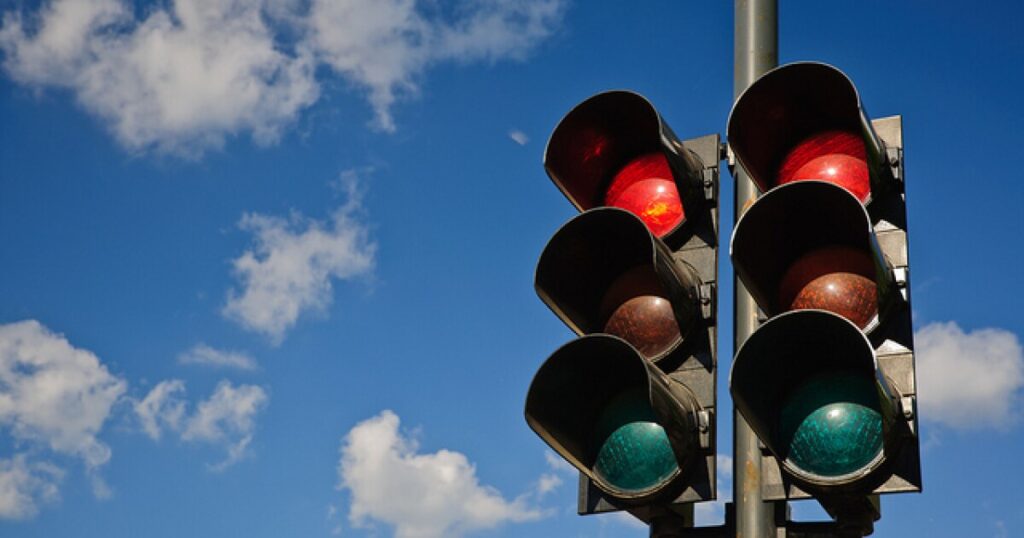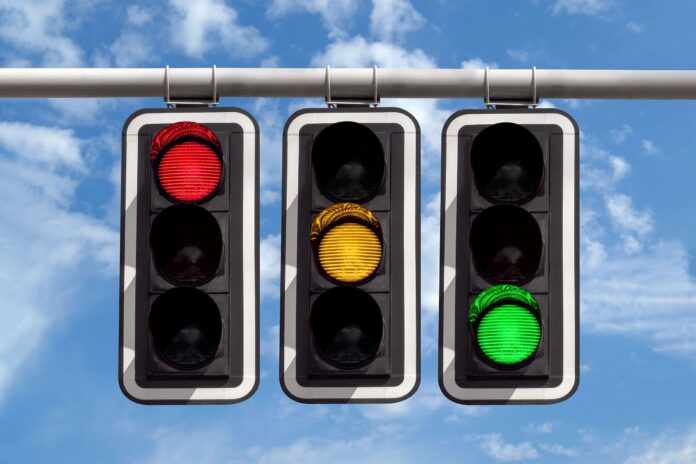Have you always wondered why traffic lights have these colors?
Ever pondered the enigmatic artistry that orchestrates our daily road symphony? A masterful choreography conducted by the unassuming traffic light, dictating the ebb and flow of vehicles and upholding order in our bustling thoroughfares. Amidst its kaleidoscope of hues, the vibrant shades of green, red, and yellow conceal a captivating narrative yearning to be unveiled.we embark on an exploration of the genesis and symbolism that underlie these luminous beacons, unearthing the rationale behind their manifestation in the resplendent shades of green, red, and yellow. Venture forth with us on this captivating odyssey as we navigate the intriguing realm of traffic lights, unraveling their indispensable role in ensuring the safety and efficiency of our roads.

Origins
The captivating tale of traffic lights and their vibrant colors begins in the early 20th century, as the first signals were erected to bring order to bustling streets. Traffic officers valiantly relied on whistles and illuminations to orchestrate the flow of vehicles, granting permission to forge ahead or beckoning them to halt. Yet, it wasn’t until 1920 that a visionary named William Potts revolutionized the landscape with the advent of the standardized traffic light.
In those early days, a dazzling array of lights and patterns adorned intersections, lacking any semblance of uniformity. Each locale possessed its own distinctive configuration, resulting in a kaleidoscope of confusion for drivers. Recognizing the pressing need for harmony, the Federal Highway Administration stepped forward in 1935 to compose a symphony of guidelines known as the “Manual on Uniform Traffic Control Devices.” Nestled within this manual was a decree that forever altered the traffic light tapestry—red, yellow, and green colors were to become the melodic trio gracing intersections nationwide.
This momentous standardization initiative harmonized the symphony of signals, ensuring that drivers, regardless of their whereabouts, could decipher the language of lights effortlessly. The universal adoption of this chromatic trio transformed the United States into a canvas of synchronized traffic management, where clarity and safety danced hand in hand.
Colors
Embarking on a historical quest, we unravel the enigmatic origins of the vibrant palette that graces traffic lights. Transporting ourselves to the genesis of traffic regulation, we discover the deliberate selection of red, yellow, and green, crafting an emblematic trio that speaks a universal language to motorists. The scarlet hue, a commanding presence, denotes imminent danger, propelling drivers to an instantaneous halt. In contrast, the emerald brilliance exudes a sense of security, granting the coveted permission to proceed. A bridge between extremes, the radiant amber, aptly known as yellow, serves as a transitional warning, compelling drivers to ready themselves for an impending alteration in the flow of vehicular symphony. This standardized chromatic masterpiece has traversed continents, assimilating seamlessly into the fabric of global roadways, empowering drivers with instantaneous comprehension and enabling the orchestration of safe and efficient traffic navigation.
Red
Delving deeper into the intriguing selection process, the prominence of the color red emerges as a fascinating revelation. Red, with its elongated wavelength, possesses a remarkable attribute—it catches the eye from greater distances. This invaluable characteristic renders it a formidable ally in the realm of warning signs and traffic lights, where safety takes precedence. The arresting crimson hue commands attention, serving as a potent visual cue that demands an immediate cessation of motion. This deliberate choice resonates with the fundamental purpose of traffic lights: to safeguard lives by offering a clear and unmistakable signal, even when one finds oneself at a considerable distance. Thus, red stands unwavering as the sentinel of caution, a beacon of vigilance in the complex tapestry of road regulations.




